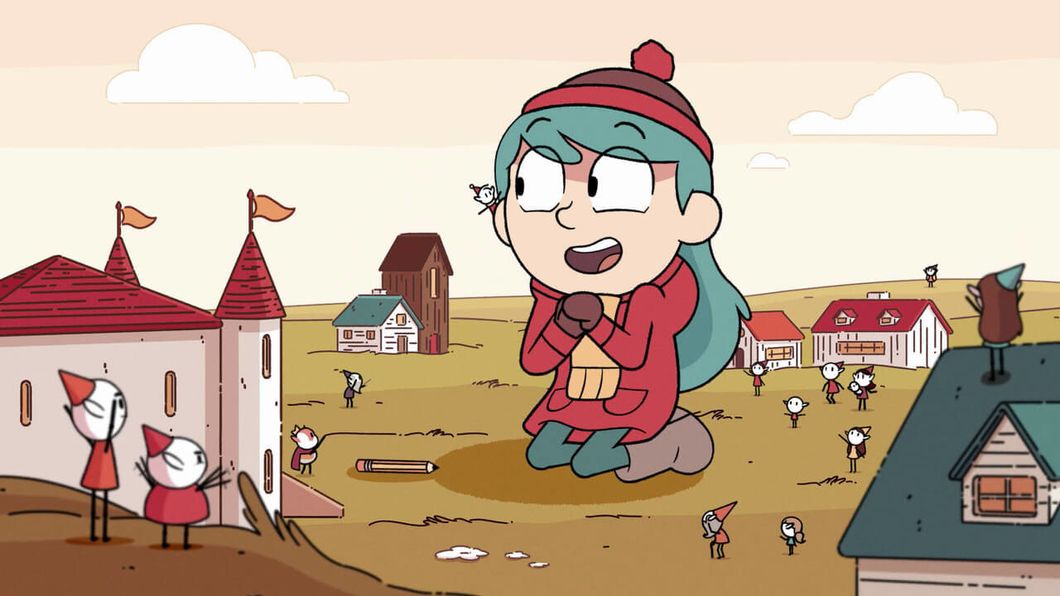If you haven't heard, there's a new animated series on Netflix called Hilda. It's kind of like a British Gravity Falls, with great animation and a storybook art style. The titular protagonist has lived in the woods all her life but has to move to the city of Trolberg after a very bizarre set of circumstances that it would be best to experience for yourself.
In the city, she joins the Sparrow Scouts and befriends fellow Scouts Frida and David. Together, they explore the mysteries of Trolberg.
Hilda is a role model for many reasons, not the least of which is her insatiable curiosity when it comes to anything in the natural world. She regularly runs into and befriends trolls, giants, and elves. When she sees something new, her first instinct is to understand it rather than to destroy or get away from it.
That's not to say she doesn't have a sense of self-preservation – if an angry troll is chasing her she will run away. And her curiosity often leads to recklessness. But the core of her character is her desire to understand the natural world.
In Western society especially, man and nature are seen as separate things. Nature is something to be pushed over to the side somewhere to make room for civilization. If it can't be pushed aside, it's destroyed or domesticated.
This is true in Hilda's world as well. When she moves to Trolberg, the lack of natural surroundings or empathy for living things upsets her. But even in a walled city, nature cannot be completely tamed. Even in the confines of Trolberg, Hilda and friends manage to find many weird and wonderful things in hidden corners of the world.
Humans are a part of nature and we cannot escape it. Hilda's story shows that instead of trying to control what we do not understand, we should control our own responses.
The unknown is a nearly universal fear in humans, often for good reason, and a healthy respect for danger is important. However, sometimes this fear can be paralyzing. It can prevent us from making groundbreaking discoveries about ourselves and the world.
Nature isn't out to kill humans, in Hilda's world or our own. It simply exists on its own terms. Through her efforts to understand it, Hilda finds ways to coexist peacefully with the living things around her. Once the unknown is known, it becomes less scary.
The best illustration of this is in the first three episodes. Hilda and her mother are attacked by tiny invisible creatures. One reveals himself to Hilda as a mouse-sized elf. He introduces her to the civilization of elves that lives right next to her house.
To them, Hilda and her mother are giants who terrorize them constantly, but she's never seen them before because they chose not to reveal themselves. As Hilda is negotiating with them in order to keep her house, she runs into a giant that towers over the mountaintops. He didn't even notice her until she screamed in his ear.
She befriended the giant and helped reunite him with his lover, and as they walk away hand in hand they demolish her house underfoot without even noticing.
As Hilda and her mother stare in shock at the destruction, Hilda notices her mother is stepping on the house of an elf.
None of these three races are malicious, yet they cause problems for each other simply by existing in their own worlds. This is how the natural world works. "What's normal for the spider is chaos for the fly," as they say.
This is why taking time to understand the natural world the way Hilda does would benefit everyone of all ages. It's an exercise in empathy and diplomacy, two things that we desperately need more of in today's world.
















